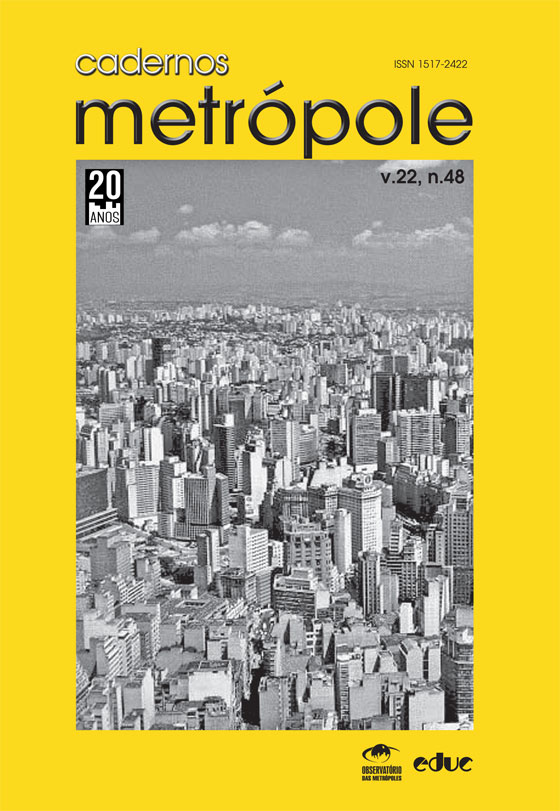O rio, a ferrovia e a marginal: infraestrutura e ambiente na ocupação da várzea do Tietê em São Paulo
DOI:
https://doi.org/10.1590/2236-9996.2020-4809Palabras clave:
forma urbana, paisagem ambiental urbana, urbanização, infraestrutura, historiografia urbanaResumen
O presente artigo aborda a ocupação de áreas ambientalmente sensíveis na metrópole paulistana, tendo como objetivo explicar a materialização histórica do território de várzea entre Lapa e Barra Funda, que teve como elementos estruturantes o rio, a ferrovia e as marginais. Por meio da construção da narrativa histórica e do exercício da cartografia interpretativa, este artigo explica o surgimento da paisagem ambiental urbana sobre várzea, revelando seus elementos estruturantes e sua ocupação, condicionados por diferentes lógicas, elucidando sua condição material atual, base para a aplicação de instrumentos urbanísticos contemporâneos. Como resultado, destaca-se a produção de uma paisagem fragmentada, bem como apresenta-se a construção de alegorias que articulam
uma reflexão sobre o papel da infraestrutura na ocupação do território natural.
Descargas
Publicado
Cómo citar
Número
Sección
Licencia
La revista no puede pagar derechos de autor o distribuir reimpresiones.
El Instrumento Privado de Autorización y Asignación de Derechos de Autor, fechado y firmado por el (los) autor (es), debe transferirse en el paso 4 de la presentación (Transferencia de documentos complementarios). En caso de duda, consulte el Manual de envío del autor.
El contenido del texto es de responsabilidad del autor (es).


